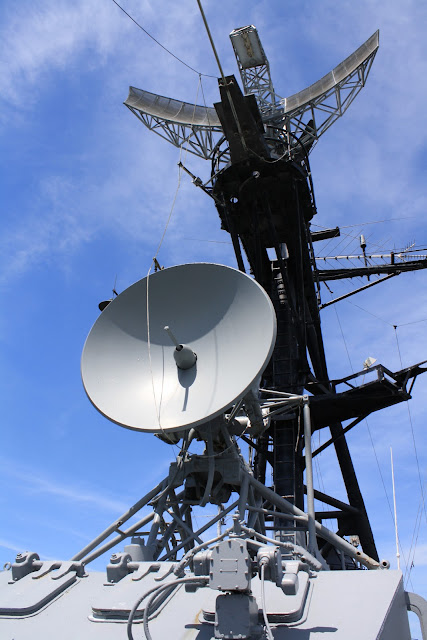USS Yorktown (CV-10) is a decommissioned aircraft carrier that has been turned into a museum. "The
Yorktown is the tenth aircraft carrier to serve in the United States Navy. She was named for the
Yorktown (CV-5), lost while repelling the Japanese Fleet at the Battle of Midway in 1942. Built in Newport News, Virgina, as an Essex-class carrier, the new
Yorktown was commissioned on April 15, 1943.
Yorktown played a significant role in the Pacific offensive which began in late 1943 and ended with the defeat of Japan in 1945.
Yorktown received the Presidential Unit Citation and earned 11 battle stars for World War II service.
Yorktown was featured in the 1944 Academy Award-winning documentary motion picture
The Fighting Lady and in the 1970 motion picture
Tora! Tora! Tora!
Yorktown displaced 27,100 tons during World War II, and carried a crew of 380 officers, 3,088 enlisted men and an air group of 90 planes. In the 1950's, she was modified with the addition of an angled deck for jets, which increased her displacement it 41,000, and the she was converted to an antisubmarine carrier. In this capacity, she served in the Vietnam War in the 1960's and in 1968 recovered the
Apollo 8 astronauts, the first men to reach the vicinity of the moon. Decommissioned two years later, the
Yorktown was towed from New Jersey to Charleston and dedicated as a museum in 1975." as per flier.
It is really neat to walk through the living and working areas, the fire room and engine room, the flight deck and bridge, and the wardroom and brig.
 |
| USS Yorktown |
 |
| massive bow |
 |
| USS Yorktown |
 |
| latrines |
 |
| bunks |
 |
| dentist |
 |
| Samuel in the dentist chair |
 |
| recipe for 10,000 cookies |
 |
| supplies for 10,000 cookies |
The USS Yorktown also has a great collection of historic military aircraft.
 |
| A-7E Corsair II |
 |
| SH-3G Sea King |
 |
| F/A -18A Hornet |
 |
| EA-3B Skywarrior |
 |
| F-4J Phantom II |




















































